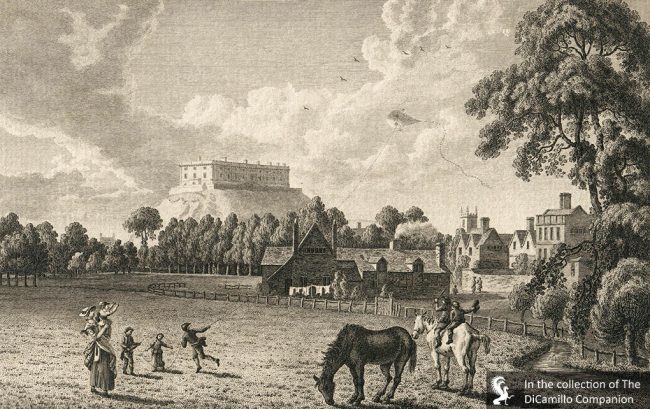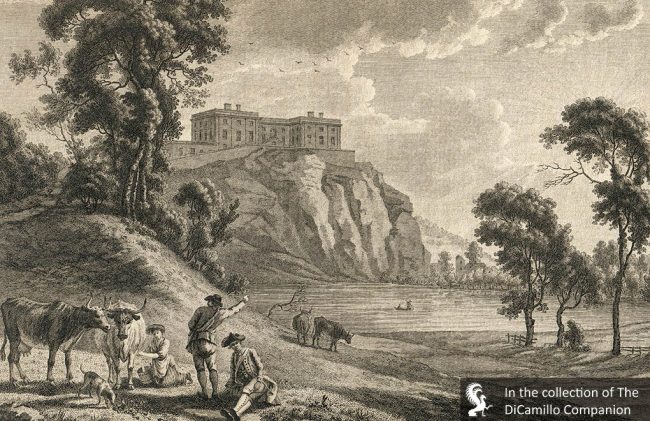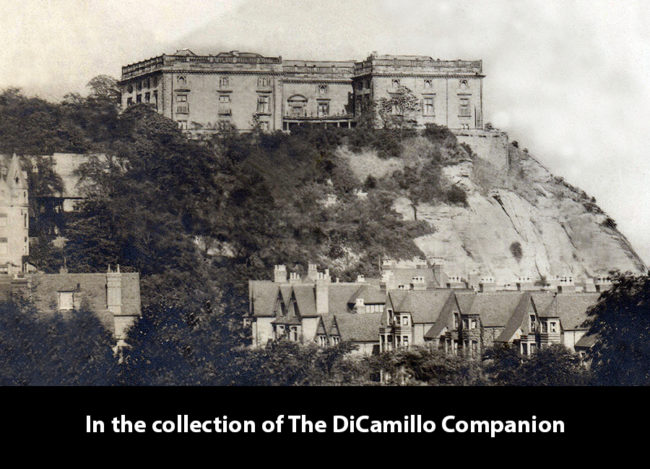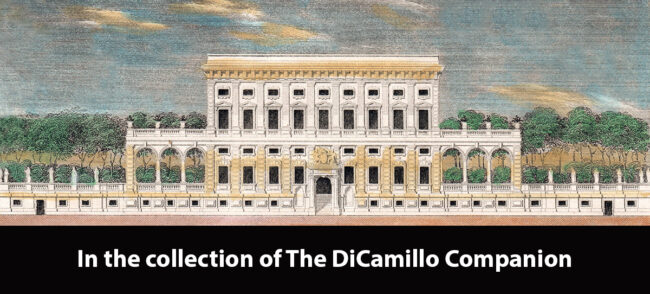
A 1778 engraving of the house from "The Copper Plate Magazine"

A 1778 engraving of the house from "The Copper Plate Magazine"

The House from a circa 1900 postcard

The Palazzo Doria-Tursi, Genoa, from an 1835 hand-colored engraving that appeared in "L'Univers Pittoresque," Paris. This palazzo, and those like it, very likely influenced the design of Nottingham Castle.
Earlier Houses: In the Middle Ages there was a large castle here that served as a major royal fortress and residence. This medieval castle was mostly destroyed in 1649, as as result of the English Civil War. The current Ducal Mansion is built on its foundations and incorporates some elements from the earlier castle. It was here, on October 19, 1330, that King Edward III staged a coup d'état at against his mother, Queen Isabella, and her lover, Roger Mortimer, 1st Earl of March. After the murder of Edward III's father, Edward II, at Berkeley Castle, an act almost certainly orchestrated by Isabella and Mortimer, the couple had seized power, acting as regents for the underage Edward III.
House & Family History: Nottingham was originally a medieval castle that was effectively destroyed during the Civil War. Toward the end of the war Charles I raised his standard here as the rallying point for his armies. Soon after the king's departure the Castle was made defensible and held by the Parliamentarians. Commanded by John Hutchinson, they repulsed several Royalist attacks and were the last group to hold the Castle. After the execution of Charles I in 1649 the Castle was razed to prevent its reuse. The current House was built by Henry Cavendish, 2nd Duke of Newcastle, between 1674 and 1679 on the foundations of the medieval castle. The mason-architect was Samuel Marsh of Lincoln, who also worked for the duke at Bolsover Castle. His designs are thought to have been strongly influenced by Rubens's 1622 book, "Palazzi di Genova," which depicted the palazzi of Genoa (see "Images" section). The current House is a rare surviving English example of Artisan Mannerist architecture. The Industrial Revolution left Nottingham with the worst slums in the British Empire outside India; this led to riots in 1831 in protest of the 4th Duke of Newcastle's opposition to the Reform Act. In 1832 the rioters burned down the Ducal Mansion at Nottingham Castle. The House remained a derelict shell until it was restored in 1875 by Thomas Chambers Hine and opened in 1878 by the Prince of Wales (later King Edward VII) as Nottingham Castle Museum, the first municipal art gallery in Britain outside London. The new interiors featured a top-lit picture gallery modeled after the Grande Gallerie of the Louvre. During the 20th century a drawing of the House appeared on millions of packets of rolling tobacco and cigarettes made by John Player & Sons, a Nottingham company. Most packets had the phrase "Nottingham Castle" and an image of the great house. This led Ian Fleming to refer to "that extraordinary trademark of a dolls' house swimming in chocolate fudge with Nottingham Castle written underneath" in his James Bond book "Thunderball." The Castle is today a museum and art gallery that houses collections of silver, glass, armor, and paintings, in addition to 15 centuries of Nottingham history.
Architect: Samuel Marsh
Date: 1674-79Architect: Thomas Chambers Hine
Date: 1875
Title: Art Treasures of England: The Regional Collections
Author: Waterfield, Giles; et al.
Year Published: 1998
Reference: pgs. 34-35
Publisher: London: Royal Academy of Arts
ISBN: 0900946598
Book Type: Softback
House Listed: Grade I
Park Listed: Not Listed
Past Seat / Home of: SEATED AT EARLIER HOUSE: King Edward III, 14th century. SEATED AT CURRENT HOUSE: Henry Cavendish, 2nd Duke of Newcastle-upon-Tyne, 17th century. Henry Pelham Fiennes Pelham-Clinton, 4th Duke of Newcastle-under-Lyne, 19th century.
Current Ownership Type: Government
Primary Current Ownership Use: Museum
Ownership Details: Owned by Nottingham City Council and used as a museum.
House Open to Public: Yes
Phone: 01159-153-700
Email: [email protected]
Website: https://www.nottinghamcastle.org.uk/
Historic Houses Member: No